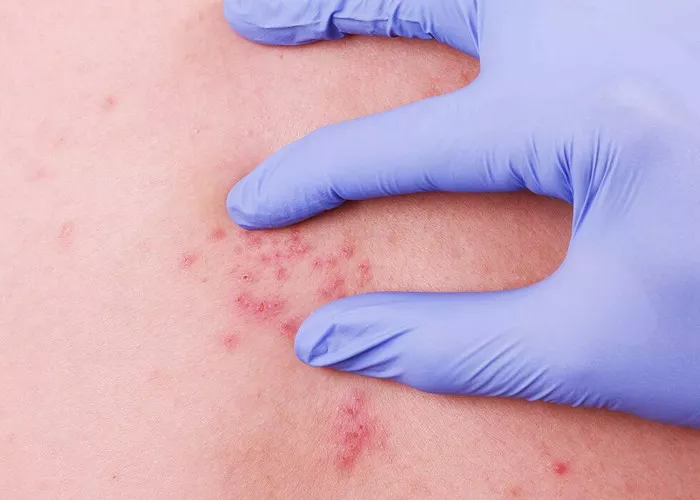Shingles, also known as herpes zoster, is a viral infection caused by the varicella-zoster virus—the same virus that causes chickenpox. After a person recovers from chickenpox, the virus remains dormant in the body, residing in nerve tissue near the spinal cord and brain. Years later, the virus can reactivate, causing shingles. This article explores the duration of the shingles virus, including the phases of the infection, typical timeline of symptoms, factors influencing the duration, and treatment options available.
Understanding Shingles
Shingles typically manifests as a painful rash that develops on one side of the body, often in a band-like pattern. The rash is caused by the virus spreading along the nerves to the skin. Before the rash appears, many individuals experience pain, itching, or tingling in the affected area, often preceding the rash by a few days.
Phases of Shingles
Shingles progresses through several distinct phases:
1. Prodromal Phase: This initial phase involves symptoms such as pain, itching, or tingling in a specific area of the skin. These symptoms can be mild to severe and typically occur before the rash appears.
2. Acute Phase: The acute phase begins when the characteristic shingles rash appears. The rash consists of clusters of fluid-filled blisters that break open and crust over. It is usually confined to one side of the body and follows the pattern of the affected nerve(s).
3. Healing Phase: As the rash begins to heal, the blisters dry up and form crusts. This phase can last several weeks, during which time the skin may be sensitive and continue to cause discomfort.
Duration of Shingles Symptoms
The duration of shingles symptoms can vary from person to person and depends on several factors, including:
- Age: Older adults tend to experience more severe symptoms and longer recovery times.
- Health: Individuals with weakened immune systems or certain medical conditions may have more prolonged episodes of shingles.
- Prompt Treatment: Early initiation of antiviral medications can help shorten the duration and severity of symptoms.
Timeline of Shingles Symptoms
While the timeline can vary, the typical progression of shingles follows a general pattern:
- Days 1-3: Prodromal symptoms such as pain, itching, or tingling begin in the affected area.
- Day 4 or 5: The characteristic rash appears, consisting of fluid-filled blisters that are often painful.
- Week 2: Blisters continue to develop and may merge. Pain and discomfort are usually at their peak.
- Weeks 3-4: The rash begins to crust over and heal. Pain gradually subsides, although some individuals may experience lingering nerve pain known as postherpetic neuralgia (PHN).
- Weeks 4-6: Crusts fall off, and skin starts to heal. Discoloration or scarring may persist for some time.
Factors Influencing Duration
Several factors can influence how long shingles lasts and the severity of symptoms:
- Age: Older adults, particularly those over 50, are more likely to develop severe symptoms and complications.
- Health Condition: Individuals with weakened immune systems due to conditions such as HIV/AIDS, cancer, or undergoing immunosuppressive therapy may experience prolonged shingles episodes.
- Prompt Treatment: Starting antiviral medications within 72 hours of rash onset can help shorten the duration and reduce the severity of symptoms.
- Complications: Certain complications of shingles, such as PHN, can prolong symptoms well beyond the acute phase.
Treatment Options for Shingles
Treatment aims to reduce the severity of symptoms, shorten the duration of the infection, and prevent complications. Key treatment options include:
1. Antiviral Medications: Drugs such as acyclovir, valacyclovir, and famciclovir can help reduce the duration and severity of shingles if started early.
2. Pain Management: Over-the-counter pain relievers such as acetaminophen (Tylenol) or nonsteroidal anti-inflammatory drugs (NSAIDs) can help alleviate pain and discomfort.
3. Antiviral Creams: Topical creams containing capsaicin or lidocaine may provide relief from localized pain and itching.
4. Corticosteroids: In some cases, corticosteroids may be prescribed to reduce inflammation and pain, especially if started early in the course of the infection.
5. Complication Prevention: Vaccination with the Shingrix vaccine is recommended for adults aged 50 and older to prevent shingles or reduce its severity and complications.
SEE ALSO: Does Most Insurance Cover the Shingles Vaccine?
Complications and Long-Term Effects
While shingles typically resolves within a few weeks, complications can arise that prolong symptoms or cause long-term effects:
1. Postherpetic Neuralgia (PHN): PHN is the most common complication of shingles, characterized by persistent nerve pain in the affected area that can last for months or even years after the rash has healed.
2. Other Complications: Rare complications of shingles include bacterial skin infections, eye complications (if the rash affects the eye area), and neurological problems.
Preventing Shingles
Prevention is key, especially for individuals at higher risk of developing shingles or its complications:
1. Vaccination: The Shingrix vaccine is highly effective in preventing shingles and reducing the risk of PHN. It is recommended for adults aged 50 and older, even if they have previously received the older Zostavax vaccine.
2. Healthy Lifestyle: Maintaining a healthy immune system through regular exercise, balanced nutrition, adequate sleep, and stress management may help reduce the risk and severity of shingles.
Conclusion
In conclusion, the duration of the shingles virus can vary depending on individual factors such as age, health status, and promptness of treatment. While the acute phase of shingles typically lasts several weeks, some individuals may experience lingering symptoms or complications that extend beyond this timeframe. Early recognition of symptoms, prompt medical evaluation, and initiation of antiviral treatment can help shorten the duration and reduce the severity of shingles. Vaccination with the Shingrix vaccine is a crucial preventive measure for older adults to protect against shingles and its potential complications, including PHN. By understanding the phases of shingles, factors influencing its duration, and available treatment options, individuals can better manage this viral infection and promote their overall health and well-being.
Related Topics:


























